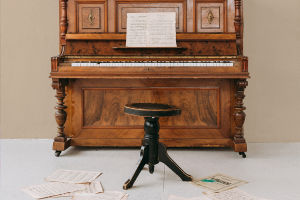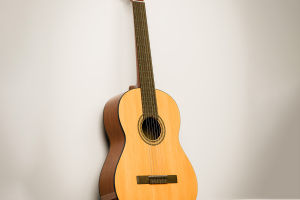Baroque recorders are crafted with precision and care, inspired by original instruments housed in various historical collections.
Typically made in boxwood, these instruments also work well with other woods such as olive, plum, and maple.
Most original baroque recorders feature single holes and are designed with traditional "old" fingering instead of the Dolmetsch system.
Dear Lykkers! The decision to avoid double holes in the 18th century was likely intentional, as it not only impacts the tonal quality of the lower notes but also alters the sound of the entire first octave. This preference for single holes remains a hallmark of authentic baroque recorders, maintaining their unique tonal characteristics and historical authenticity.
Alto Recorder After Jacob Denner
Features and Design
The alto recorder after J. Denner is based on a plain boxwood instrument found in the Musikhistorisk Museum, Copenhagen. This recorder is pitched at a=415 Hz and is renowned for its resonant and free high register.
Performance Quality
The lower notes, while not as robust as some English designs, achieve a fuller and more solid sound when crafted with single holes and traditional fingering.
Customization Options
This recorder is available with both modern and old fingering, as well as options for single or double holes to suit diverse playing preferences.
Tenor Recorder After Johann Schell
Historical Inspiration
The tenor recorder is modeled after an original instrument by Johann Schell from the Tyrolean State Museum in Innsbruck. The instrument is designed for comfort, even at its low pitch of a=415 Hz, and does not feature a key.
Material and Craftsmanship
Crafted primarily in boxwood, some versions are also available in plumwood for a lighter alternative. Single holes and traditional fingering preserve the historical integrity of the design.
Alto Recorder After P. Bressan
English Heritage
This model draws inspiration from an English alto recorder from the ex-Hunt collection, now part of the Bate Collection in Oxford. The original instrument features full ivory mounts and a pitch of approximately a=405 Hz.
Modern Adaptation
The new version eliminates ivory mounts while maintaining the historical essence. It offers shorter waiting times compared to other models, making it more accessible to musicians.
Alto Recorder in G’ by J. B. Gahn
Unique Origins
This model is influenced by two original instruments—one in a private Hamburg collection and another in the Brüggen collection in Amsterdam. These recorders align with either a high-pitch f’ recorder (a=466 Hz) or a low-pitch g’ recorder (a=415 Hz).
Distinctive Design
Gahn's recorders deviate from standard designs, showcasing similarities to early baroque Kynseker models. These features highlight the innovative approach of Gahn, a member of the turner’s guild in Nürnberg.
Voice Flute
Historical Context
The voice flute in d’ was historically absent in Germany and likely represented a high-pitch recorder in c’.
Future Prospects
Plans for a new series of voice flutes inspired by English models are under consideration. These designs will cater to the voice flute repertoire while embracing the principles of historical performance practice.


